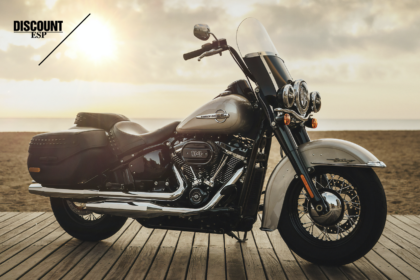
18 Tips To Get Your Bike Spring Ready
No matter where you live or what your climate is, 2019-2020 has been a long winter. Chances are when you hear the word open, you’re not thinking about the economy, you’re thinking about the road.
And not just the road, but your life there. All the places you stop to have a beer and hang out with your tribe. It’s the experience you want and the experience you will have again.
That means it’s time to get rid of the garage rot, and we’re here to make it easy for you with Discount ESP‘s 18 tips to get your bike spring-ready. Proper attention now will prevent a ruined day of riding later.
No more chit-chat. Here we go from top to bottom and front to back—thinking of everything.
- Tires: Tires normally lose some air pressure during the winter so first make sure they are properly inflated. Then evaluate wear and tear. Are there cracks? Is the tread worn? If so, it’s time to replace them.
- Brakes: Take a close for cracks and leaks in the brake pads and brake lines. Once you’ve completed your inspection and tune-up, test the brakes in real-time. If you hear noises of protest, it’s a job for your mechanic.
- Battery: If your battery hasn’t been plugged into a trickle-charger over the winter, test its charge and recharge if necessary. If it won’t recharge it needs to be replaced. If fluids are low, add distilled water. Check to see if the cables are securely connected.
- Critters: Inspect the exhaust system and air filters for small animal squatters and evict them.
- Fuel: Gas deteriorates very quickly. If you didn’t drain your gas tank last fall, do it now then refill with high octane fuel for the best combustion.
- Oil: Like gas, oil degrades over time. It’s a good idea to change the oil and filter both at the same time (see your owner’s manual for instructions).
- Fluids: Check and top off the fluids (brake, transmission oil, coolant, hydraulic clutch fluid, fork oil). If their appearance looks degraded do a system flush, especially for the brake fluid.
- Electrical System: If your electrical components work intermittently, that could be a sign that your electrical system needs work. You’ll want to look at the condition and age of your main fuse, ground wires, stator, ignition coil, and plug wires and caps.
- Lights: Bright lights make for safe rides. Clean your headlights, then test the high and low beams, taillights, brake lights, turn signals, and flashers. Replace burnt-out bulbs.
- Controls: Examine the steering system and clutch. Check for fraying, corrosion, cracks, and leaks. Make sure there are no kinks in the hoses and that the steering works well.
- Belts and Chains: Look closely at your belt or drive chain for cracks or signs of wear. If you have a chain, clean and lubricate it. Check it for proper tension. If it’s too slack, tighten it.
- Suspension: Inspect the spark plugs to see if they are dirty or damaged. It’s better to replace them in the comfort of your garage than by the side of the road. If your bike has a front suspension, check the springs and dampers.
- Hardware: Test for loose bolts and make sure that no hardware has gone missing.
- Cables: Check and adjust the cables and give them a shot of lubricant.
- Compression: If your motorcycle is misfiring or seems to be losing power, consider doing a compression test at home.
- Sound: Almost done! It’s time to let the engine run for a few minutes to check for strange noises, adjust the mirrors, and test the horn.
- Gear: Check your helmet, gloves, boots, and emergency road kit. Helmets need to be replaced about every five years even if they look fine. Treat your leather with a leather conditioner.
- Pride: Show your pride in your bike by detailing it to perfection and bringing back that showroom finish. It will look good and last longer.
Lastly, remember to tune up your riding skills after the long winter. Now go on—get outta here!


